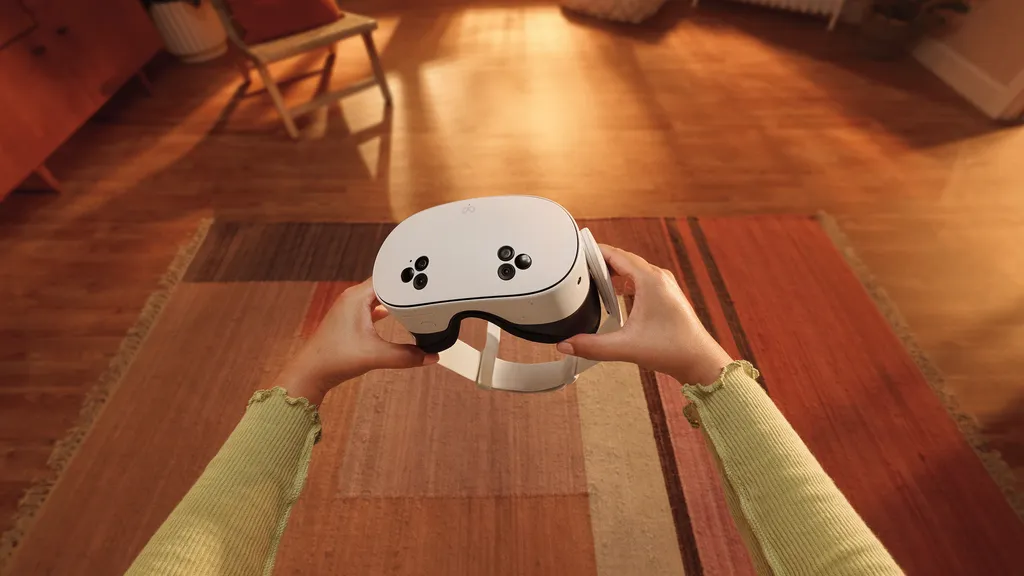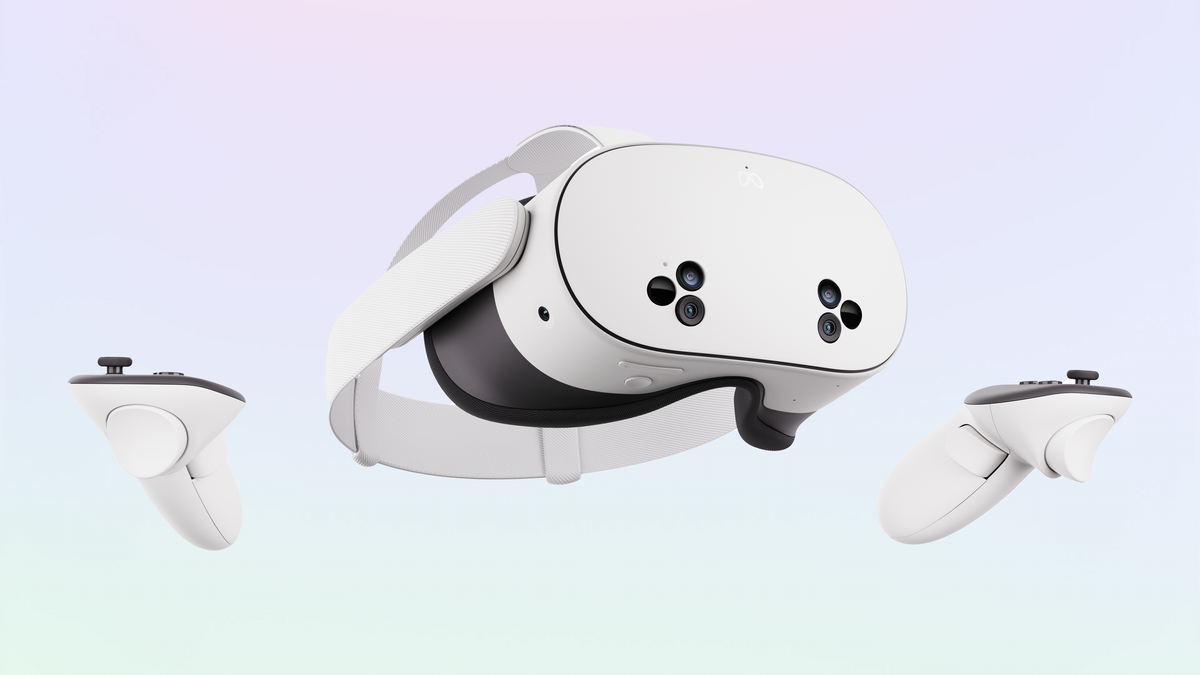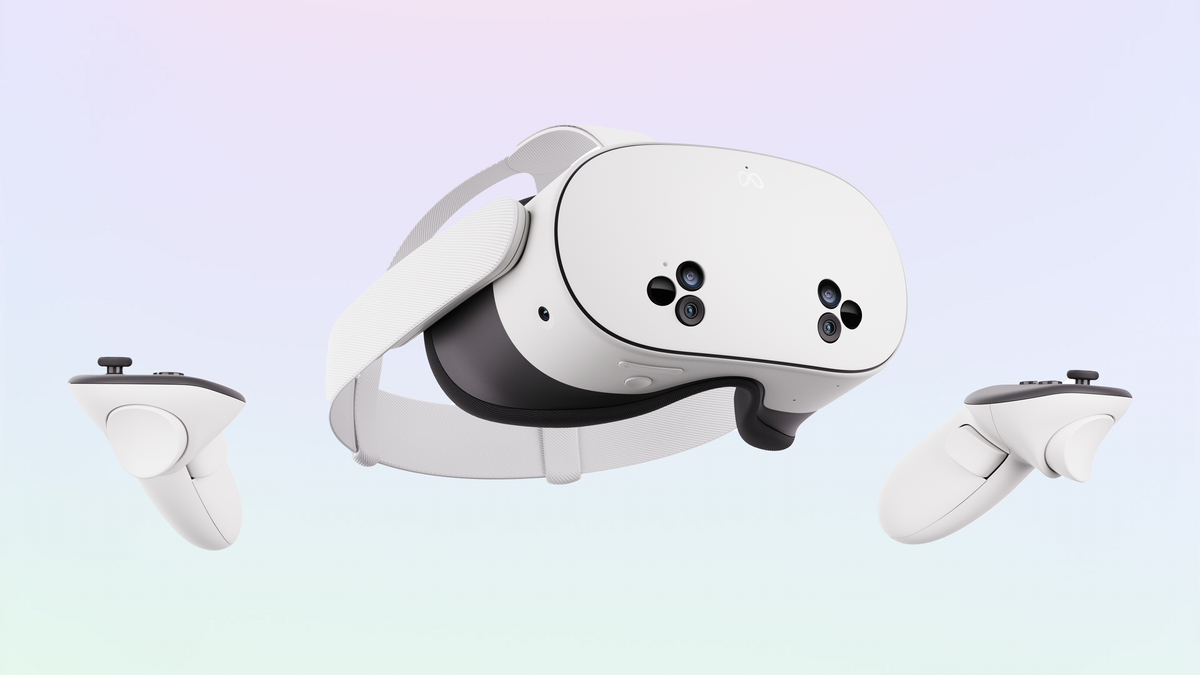Meta Quest 3S is an upgraded Quest 2 with the power and mixed reality capabilities of Quest 3 at a more accessible price.
Practically everything about 3S leaked beforehand – we've known exactly this was coming for the better part of a year — and after going hands-on, an experience that lands between Quest 2 and Quest 3 is exactly what buyers should expect.
The action button is the only new thing here, and it's an extremely useful addition that should find its way into all future Meta headsets. The button is easy to find and immediately takes you from a fully immersive app to passthrough, or from passthrough back to your app again.
Meta is also selling an optional new "breathable" facial interface, which makes the tradeoff of not being fully opaque to "help you keep cool while working out or playing intense games". This new interface may be ideal for folks who use 3S more in mixed reality mode than pure VR.
And that's about it from a new experience perspective.
I was able to fit my Meta Ray-Ban glasses comfortably inside the eyebox using the included lens spacer in front of the facial interface. I didn't use it long enough to see if I could use it continuously like that, but it felt nice.
Quest 3 owners will be curious about the new passthrough button but, resolution and lens quality wise, I've seen this before. It's a Quest 2, except it can run all the same content as Quest 3 because it carries the same processor and mixed reality capabilities.
I spent the majority of my time in Batman: Arkham Shadow learning how to grab my cape from my sides to stretch into a t-pose and glide across the map. It felt nice, but I missed the clarity of the Quest 3's lenses every moment I was in Gotham’s sewers. Quest 3 owners can breathe a sigh of relief, then, as your device is still the best Meta headset on the market right now. You might want to think about upgrading to a 512 GB model given its new price, but 3S is firmly a downgrade from what you have.
Quest 3S: A Private Personal Computer For $300
I spent around eight hours working in a Quest 3 on my way to Meta Connect, my work enabled by enormous strides taken this year in the operating system underpinning the Quest experience.
Multitasking and Quest HDMI Link keep you connected to the other devices and services you need to get your job done, and Quest 3S benefits from the same Horizon OS system driving Quest 3 at a much lower price.
Meta cleared some tens of millions of Quest 2 headsets over its lifetime, which ends later this year after more than four years on the market.
With an XR2 Gen 2 only product line now that smoothly stair steps from $300 to $500 based around Horizon OS and the games and apps you can play on either Quest 3 or 3S, Meta will be hoping to exceed those numbers over the next couple years.
A year into Quest 3's life there's no killer mixed reality app. Arguably, that's because Meta releases the tools to build those experiences piecemeal with each new release of the underlying software.
Incredible apps like Pencil, for instance, can teach you to draw in minutes by simply grabbing a pencil and scribbling on paper with a mixed reality outline showing you where to draw. The developers of these apps are only beginning to unlock their ideas on Meta's systems.
When can you tell a parent that the $300 Quest 3S can be their child's first personal computer – not just a VR console – and then accomplish a traditional task like learning how to draw with it?
Meta might just be ready to surprise a lot of people with how many Quest 3S headsets it is about to sell.

































